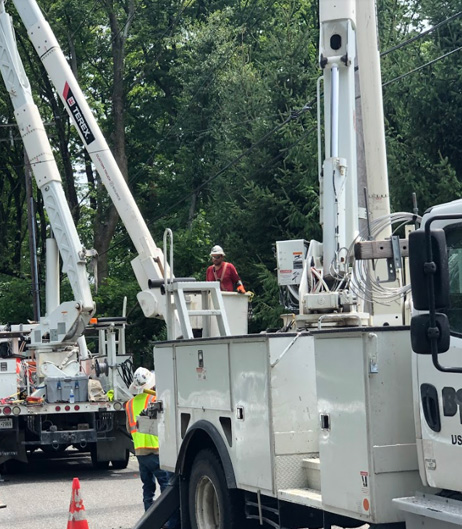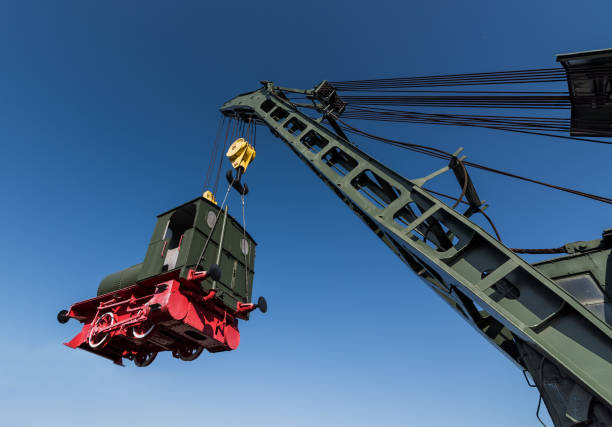
When it comes to construction, crane operations play a major role. However, the very nature of crane operations introduces significant risk factors that must be managed to protect personnel, equipment, and the integrity of the work site. Not only does a robust safety protocol uphold legal and ethical standards but it also enhances operational efficiency and reputation in the construction industry.
In this guide, our experts at Bobcat Contracting LLC, a crane company in Houston, discuss the crucial safety practices essential for every construction and project manager aiming to maintain a secure and efficient work environment.
The Foundation of Crane Safety: Equipment Integrity
Regular inspections and maintenance are non-negotiable aspects of a robust crane safety protocol:
- Pre-Operation Checks
Pre-operational inspections are a daily protection against unforeseen issues. Before each shift, operators should conduct a thorough examination of the crane’s critical components. This includes checking for structural defects, ensuring the integrity of rigging equipment, and verifying that all safety mechanisms are functioning correctly. When potential problems are identified and addressed early, operators can prevent minor issues from escalating into major safety hazards.
- Preventative Maintenance
Periodic comprehensive inspections, conducted by qualified personnel, can provide a better evaluation of the crane’s systems. These inspections carefully examine electrical, mechanical, and structural components and help you search for signs of wear or damage that might not be immediately apparent. Such thorough examinations are important for maintaining the long-term reliability and safety of the equipment.
By following manufacturer guidelines and establishing a regular maintenance routine, construction companies can extend the lifespan of their equipment and enhance safety. Not only does this prevent expensive breakdowns, but it also ensures that cranes operate at peak efficiency.
- Elevating Safety: The Role of Personnel in Crane Operations
While equipment reliability is crucial, those who operate them play an equally vital role in maintaining a safe work environment.
- Comprehensive Training
Investing in thorough training programs for all personnel involved in crane operations is paramount. This includes crane operators, rigging specialists, signal personnel, and support staff. Proper training ensures that your team understands the technical parts of crane operation and develops an awareness of hazards and emergency procedures.
- Formal Certification
Certification is a formal validation of the expertise involved in operating cranes. By ensuring that everyone obtains and maintains proper certifications to operate cranes, construction companies show their commitment to safety and professionalism. Certified professionals are more skilled in their roles and contribute to a culture of safety awareness that permeates the entire work site.
- Load Management: Adherence to Load Limits and Rigging Requirements
Understanding and respecting the limits of your equipment is fundamental to crane safety:
- Respecting Load Capacities
Every crane has specific load limitations that must be strictly adhered to. Overloading can lead to catastrophic failures, including structural damage to the crane, tipping, collapse, or dropped loads. Always consult the manufacturer’s specifications and use caution when determining load capacities.
- Proper Rigging
Proper rigging techniques are equally critical in load management. This involves choosing the appropriate rigging gear for each load, ensuring all equipment is in good condition, and using correct rigging methods to secure and balance the load. Rigging personnel must consider factors such as the weight distribution of the load, wind effects, and the crane’s movement to ensure stability throughout the lift.
- Establishing a Culture of Safety
Creating a safety-first mindset throughout your organization could be the strongest tool in preventing accidents and ensuring smooth operations:
- Open Communication Channels
Clear lines of communication between crane operators, rigging teams, and ground personnel ensure that everyone is aware of the operation’s progress and any hazards. Regular safety meetings provide a forum for discussing concerns, sharing best practices, and reinforcing the importance of vigilance in all crane-related activities.
- Continuous Improvement
Regular reviews of safety protocols, analysis of incidents, and incorporation of lessons learned from the industry all contribute to a strong safety framework. When construction companies establish an environment where safety is seen as everyone’s responsibility, they can create a work culture that prioritizes the well-being of all team members and stakeholders.
- Environmental Considerations in Crane Safety
The environment in which a crane operates can significantly impact safety. Always consider weather conditions such as wind speed and direction, visibility, and temperature extremes. In addition, you should consider site-specific hazards, such as ground stability, overhead power lines, and nearby structures or obstacles. Adapting your safety protocols to account for these environmental factors is important in maintaining a secure work site.
- Using Technology for Enhanced Safety
Utilize advanced technology that can improve crane safety, such as load moment indicators, anti-collision systems, wind speed monitors, and digital inspection and maintenance tracking tools. While these technologies can greatly enhance safety, they should complement, not replace, human vigilance and expertise.
- The Role of Project Planning in Crane Safety
Comprehensive project planning is crucial for identifying hazards and implementing preventive measures:
- Site Survey and Risk Assessment
Before crane operations start, conduct a thorough site survey to identify potential obstacles such as power lines, buildings, or trees. You should also assess ground conditions and stability and determine the best locations for crane setup. Based on this survey, perform a detailed risk assessment to anticipate and mitigate safety hazards.
- Lift Planning
Develop a detailed lift plan for each major lift operation. This plan should include load calculations and crane selection, rigging requirements, and personnel positioning. It should also include communication protocols and emergency procedures. A thorough lift plan ensures that all team members are aligned and prepared for safe execution.
Contact Bobcat Contracting LLC for a Quote on Crane Rental in Houston!
Implementing these best practices for crane safety is essential for any construction project. If you’re looking for reliable crane rental services that prioritize safety and efficiency, look no further than Bobcat Contracting LLC. Our crane company in Houston is committed to providing top-quality crane services while adhering to the highest safety standards.
Contact us today for a quote on crane rental in Houston and experience the peace of mind that comes with working with true professionals in the field!

